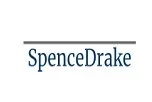The Scientific Research and Experimental Development ("SR&ED") program is a federal tax credit program administered by the Canada Revenue Agency ("CRA") and designed to encourage Canadian businesses to conduct research and development ("R&D") in Canada. SR&ED is defined in subsection 248(1) of the Income Tax Act, RSC 1985, c 1 (5th Supp) ("ITA"). The definition is broad and was interpreted by the Tax Court of Canada in the seminal decision of Northwest Hydraulic Consultants Ltd. v. The Queen, 1998 CanLII 553 (TCC).
Corporations, individuals, trusts and members of a partnership can apply for SR&ED tax credits. Incentives may come in the form of investment tax credits ("ITC"), paid in dollars to the claimant. ITCs can be as high as 35% of eligible R&D costs such as materials and labour. In fact, some of Canada's largest companies claim millions annually, of the more than $3 billion available to eligible taxpayers.
A common misconception is that the SR&ED program only applies to laboratory type work. However, as an example, a plastics manufacturing company may claim SR&ED incentives for a project to create a plastics container that was particularly difficult and involved multiple iterations and prototypes. Because SR&ED eligible work can take place in a production environment, such as in this example, the documentation that CRA requests to support a SR&ED claim may not always be available.
CRA policy specifically recognizes this fact, especially for first time claimants. According to CRA's Claim Review Manual for Research and Technology Advisors:
particularly among small companies, it is not always easy to maintain documentation. That is why Appendix 2 in the T4088 – Guide to Form T661 gives many examples of evidence that can support the SR&ED work claimed and can be used to ensure that claimants maintain adequate support for their SR&ED. This table indicates that paper documentation is not the only sort of evidence that can support an SR&ED claim...The RTA does not just look at the physical evidence provided, but also interviews personnel who did the claimed SR&ED work to obtain information about what was done and to help establish the claimant's business context.
Despite the above, in practice SR&ED auditors may disregard oral evidence and can be very strict with their documentary standards.
Enhanced CRA Scrutiny
CRA conducts a thorough review of many SR&ED claims to decide if they meet the eligibility criteria set out in the ITA. During this review, CRA may request additional information or documentation to support the claim. If the CRA alleges that a taxpayer has engaged in gross negligence with respect to their SR&ED activities, a penalty may be imposed.
More recently, it appears CRA is focused on applying gross negligence penalties pursuant to subsection 163(2) of the ITA. In general, the penalty is 50% of tax owing or in the case of SR&ED, 50% of the amount claimed. The penalties may be applied, for instance, because of an alleged lack of supporting documentation or due to the unsubstantiated assumption that the work did not take place, because of the impugned documentation or lack thereof.
Gross negligence penalties are routinely applied during any type of CRA audit. In the case of SR&ED, the common allegation is that the supporting documentation is somehow suspect (inadequate, fabricated, non-contemporaneous) therefore the work did not take place as claimed. This allegation may be made even after CRA, for example, has interviewed multiple professional engineers who conducted the work.
Third-Party Civil Penalties & Fraud
In addition to the gross negligence penalty there is a third-party civil penalty that can be applied, for example, to a third-party claim preparer. SR&ED claims are routinely prepared by consultants. Many claimants are not even aware the program exists until contacted by a consultant who will prepare the claim for a percentage. If CRA suspects/assumes that a false statement or omission was made by the third-party, preparer penalties can be applied pursuant to subsection 163.2(5) of the ITA. The penalty amount is greater than $1000 but the lesser of the gross negligence penalty and $100,000 plus the penalized' s compensation. CRA may also allege fraud and in that case the matter will be referred to CRA's criminal investigations branch. Tax fraud is a criminal code offence.
Not surprisingly, considering the intersection of tax legislation and technology, the administration of the program is convoluted. To avoid the risk of penalties, companies engaged in SR&ED activities should ensure that they have appropriate systems in place to document the activities they claim as SR&ED. They should also seek guidance from experienced professionals, such as tax lawyers or SR&ED consultants, to ensure that they are meeting all of the requirements, documented or otherwise, of the SR&ED program.
The content of this article is intended to provide a general guide to the subject matter. Specialist advice should be sought about your specific circumstances.


